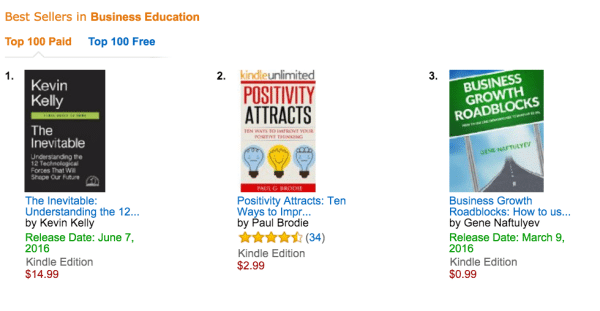
Employees work best when they think they are needed, but slack off when they think the company can’t live without them.
We’ve all heard the phrase “everyone is replaceable” many times before. Most people shrug it off as something that Machiavellian business people say that’s not true. Well, let me tell you, it is absolutely true. The uniqueness of employees is a fairy tale, much like the uniqueness of products, services, or business cultures of companies. Everything can be replaced if needed, and quite often upgraded at the same time. If you don’t think you can survive without some unique employee, it just tells me you have decided to hold on to them even at the risk of your own business. In the end, you may not get a choice whether or not to replace that person, they will leave and you will have no other choice. But that is not a bad thing.
When asked to explain my strategy for employee retention and replaceability, I refer to it as the Up or Out strategy. In a nutshell, I would argue that the most successful company will retain employees in one position only as long as it is getting the optimal benefit from that employee for the least cost. That is to say, as the benefit to the company increases, so may the employee pay and bonuses, but if the benefit to the company from the person in that particular position does not increase, or actually decreases, then the company needs to find someone else for that role.
That is the out from the Up or Out strategy. Keep in mind it is not necessary, in fact, it is less than optimal for the company to wait too long until the employee needs to be let go. Ideally, one of two other actions take place: Either the employee leaves the company on their own for a position that is a better fit or better paying, or they will be promoted within the company. As I mentioned in an earlier chapter, promotion is not related to time served but should only happen when there is a clear benefit to the company. If the person has demonstrated that they will provide more benefit in a higher role to the company, as opposed to keeping them in the current position, then a promotion is advised. So to summarize, the company needs to evaluate each role and determine if the employee in that role is executing it optimally or not. If they are, then it makes little sense to promote them, and of course, no sense to let them go. In fact, you may need to bump their pay in order to keep them in the same role, as long as that does not price them out of the optimal price range for the roll. If, on the other hand, they are not executing optimally, then the decision needs to be made as to whether they would do better in another role, or if they need to be let go.
While there is no hard-and-fast formula for exactly how long someone should stay in a particular role, there are some parameters I’ve come up with after 20 years. First is that while the company is first growing rapidly, what is most important is flexibility, so remember to give higher weight to that than simply the job description. However, once a company is at $4mm or more, flexibility should be starting to be replaced with efficiency and expert specialization. So look at employee performance within a role through that lens. Next, from practical experience, employees hit their most efficient stride somewhere between 6 months and 2 years within a company. This then can last anywhere from 1-3 years depending on the role, employee temperament, and employee empowerment. So what we end up with is a range of 18 months to 5 years, which incidentally also gives the business enough time to get from startup stage to a small business with a dozen employees and sales in the millions.
So what happens after 5 years? Well, here an interesting thing happens: The employees who have a desire to improve will generally have demonstrated enough ability and interest in a higher level position that they are promoted within the company, or if they are not promoted, they don’t settle, they end up looking for another job and leaving the company to find one where they can work at a higher level. Both scenarios show an employee with motivation for improvement and the ability to increase their value to the company they work for.
What about the employees who do not try to go for promotions or leave? Well, there is the occasional rockstar who doesn’t like to travel, or a super performer with family obligations who end up doing exemplary work for many years. That is a rare exception because, more often than not, their performance is not what it was when they were an enthusiastic new hire. Another way to say it is there are a few people who will continue to perform the same job for a long period of time and do it at both a sufficiently high quality and sufficiently low cost that a replacement for them would be hard to find. But I caution you that they are the rare exception. Most of the people who stay in the same role for over 5 years without leaving or being promoted, are working at a lower efficiency than they were during the first couple of years, and probably for more pay due to annual adjustments that most companies provide. These folks, as nice and friendly as they may be, with their plants and photos of family, and Dilbert comics in their cube, are holding the company back from faster growth and bigger profits. They are not aspiring to be more than they are. They have settled. And a company which is full of people who have settled and are without aspirations can not compete with a company of engaged, driven employees who are willing to give more, do more, and fight to succeed. So the question becomes, are you, as the owner or chief executive, willing to compromise the ability of your company to grow faster in order to not have to learn new staff names?
You may think this is too impersonal and unnecessarily rough, but I would remind you that you need to learn how to get past the ceiling that many small businesses are stuck under. If that is your goal, one of the things you need to learn how to do is see your employees through the lens of what is best for your company. If you can do that, you are well on your way toward the next milestone. If not, well, your competitor is also probably reading this advice.
Excerpted From The Original
Business Growth Roadblocks: How to use uncommon sense to surpass $5 mil
 It’s not always the sales side that is the problem, quite often it is the operations that are keeping a company from growing, but majority of books only address the sales side. This book looks at the most common problems in company operations and how to fix them. The book is written primarily to address companies of $3-5mil with 8-20 employees who seem to have slowed down the growth, and it illustrates how others have grown past that size by changing back end operation.
It’s not always the sales side that is the problem, quite often it is the operations that are keeping a company from growing, but majority of books only address the sales side. This book looks at the most common problems in company operations and how to fix them. The book is written primarily to address companies of $3-5mil with 8-20 employees who seem to have slowed down the growth, and it illustrates how others have grown past that size by changing back end operation.
View on Amazon

- Is your company’s technology falling behind? A 10 minute primer. - October 30, 2024
- Business Lines Of Credit: To Use Or Not To Use? - October 18, 2024
- Is Your Bank Really Working for Your Business? - August 12, 2024
